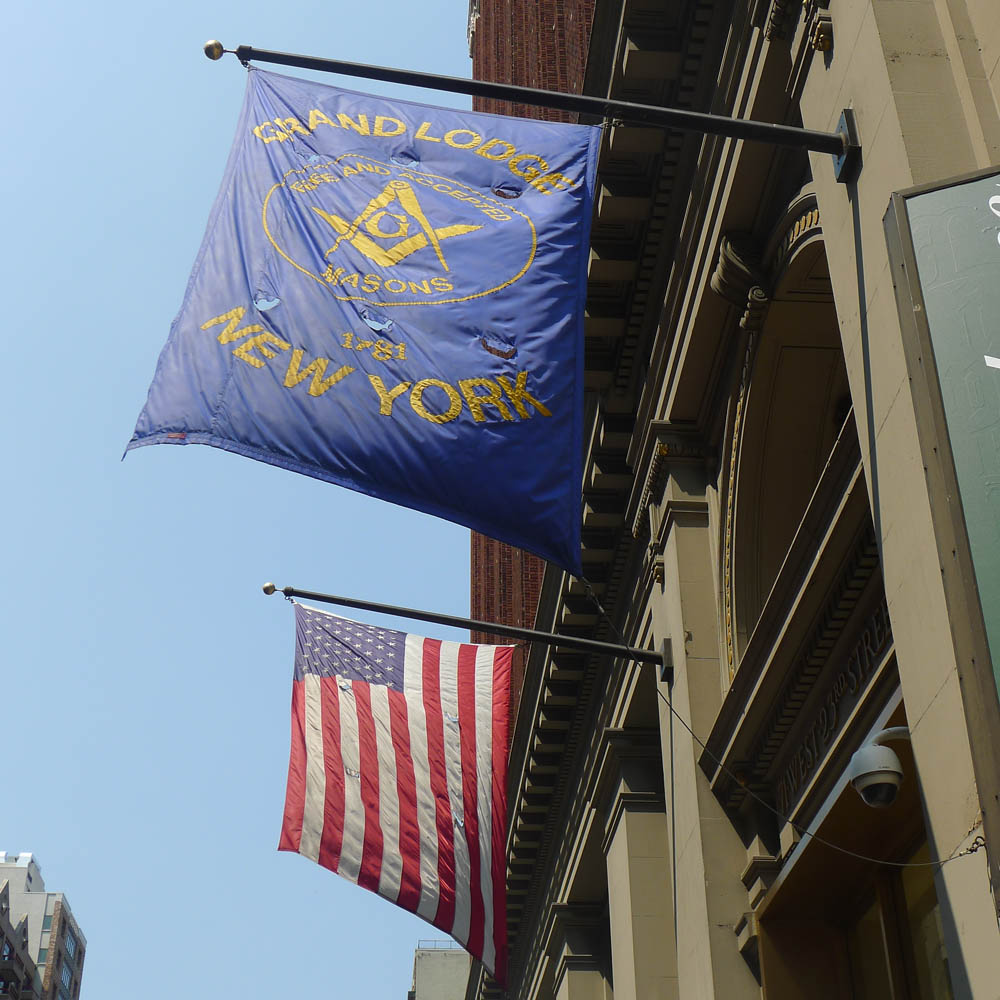
I’ve had a pretty horrible sick day, so I wanted to do something close to home. Bizarrely, just a few blocks north of my apartment is the Grand Lodge of the Freemasons, which is open to the public for tours. It seemed like a perfect, quiet activity to try.
The tour is ongoing throughout the day so you just arrive and join the group wherever they are. My guide – a decades-long Mason named Armand – was only showing around one other person when I arrived. This intimate group meant the chance to ask lots of questions – and get lots of very detailed answers – about a society that is assumed to be cloaked in secrecy.

The Grand Lodge of New York, which was founded in 1782, was once the largest Freemason lodge in the world. Its current building – by the Flatiron – was built in 1911 and has 13 lodges inside; ‘lodge’ not only applies to the actual room where meetings are held but also to a group of men. Each lodge – and there are thousands across the world – has around 60 members. There is no recruiting by the Masons; to get in, you must express interest to a member (a ‘brother’) and apply. The brothers then vote on whether or not you’re in – and yes, they can reject you if they don’t like you.
Of course, you have to fill three criteria to even be considered: You must be male, over 21 and believe in some higher being. While I’m obviously less of a fan of the male-only rule, I love the idea of bringing all religions together – and supporting them – under one roof. On the altar in each lodge, they place the religious scripts applying to its brothers: The Bible, Koran, Torah – or any other texts read by its members.
And rather than praising any particular god during meetings, they celebrate ‘Geometry’ – which is represented by a large ‘G’ in each lodge (I thought it stood for ‘God’ at first). This is a reference to the higher being as a ‘great architect’ of the universe. It’s a bit of an odd detail, I thought.





The rooms themselves were very grand. While each was decorated in a different way – Egyptian themed or with Renaissance flourishes – they all adhered to the same basic set up: Chairs for the most important members, a large stone for a gavel, an altar in the center of the room and two columns by the entrance – one topped with an Earth, the other with a globe representing the universe. This is to suggest that the Masons are universal and new brothers walk through these columns when they join.

While we suspiciously weren’t allowed into every room, it seemed less sinister than I’d expected. I really thought I was going to find the whole idea of this secret, exclusive society pretty awful, but I actually saw some attraction in meeting like-minded people once or twice a month for conversation, evenings out and charity work. It makes sense. Masonic charity donations to Masonic Home of Virginia provide shelter for elderly Masons in need, and they’re not the only ones who help vulnerable groups. Armand said it was this charity work that attracts many of the brothers to join; those who mistakenly think it will be a great networking opportunity always drop out within a year or two, he said.
When I asked him where I – as a lovely lady – was supposed to go, he didn’t even register the question. Instead we continued moving from room to room, visiting a library and the grand hall, which was decked with images of past Grand Masters. To reach each room, we walked down hallways lined with portraits of former notable Freemasons, including 14 U.S. presidents.





This was such a fascinating visit (and definitely helped get my mind off my sickly stomach) and while I’m still not convinced Armand let us into all the secrets of the Masons, he definitely told us much more than I thought he would. What a great find.










Recent Comments